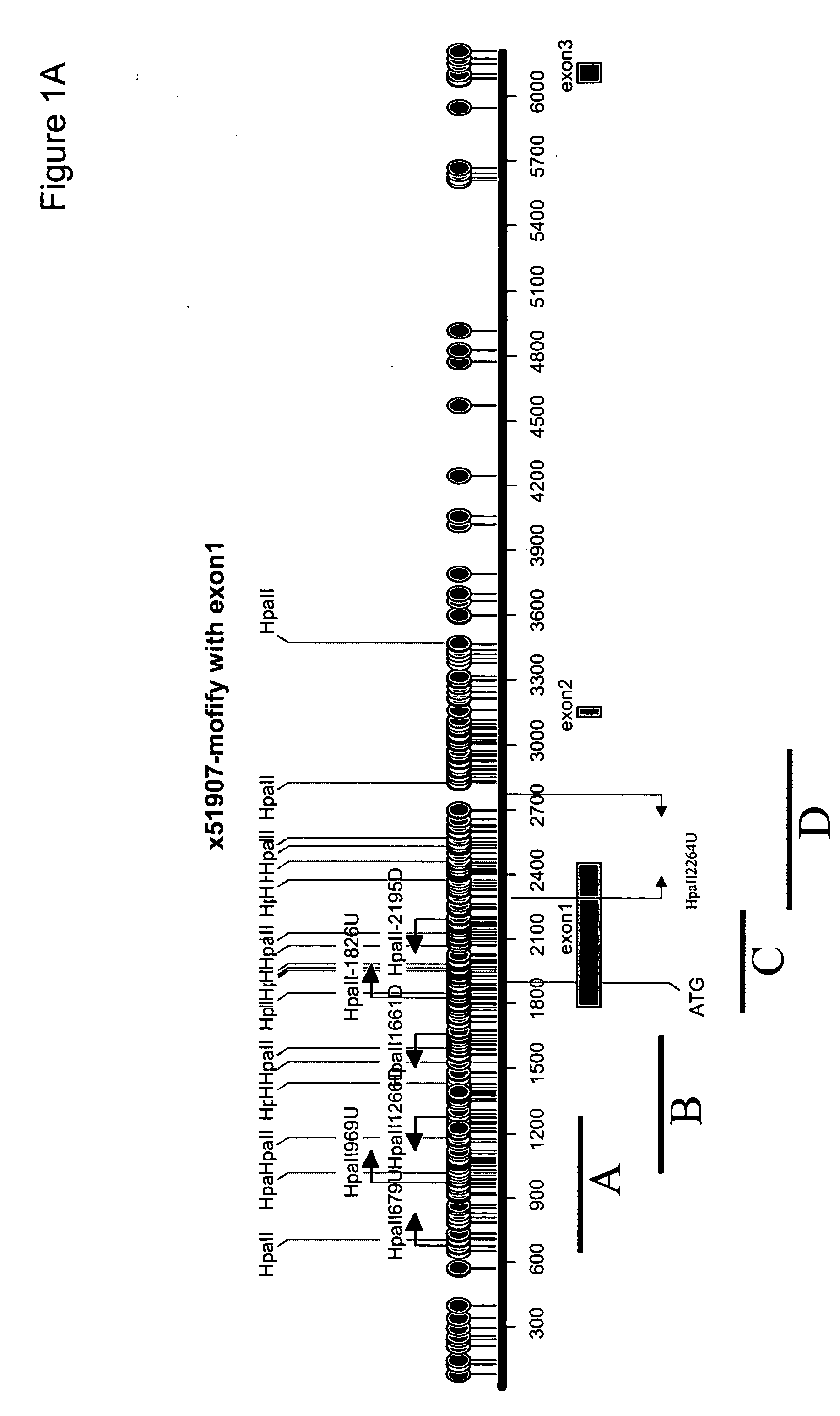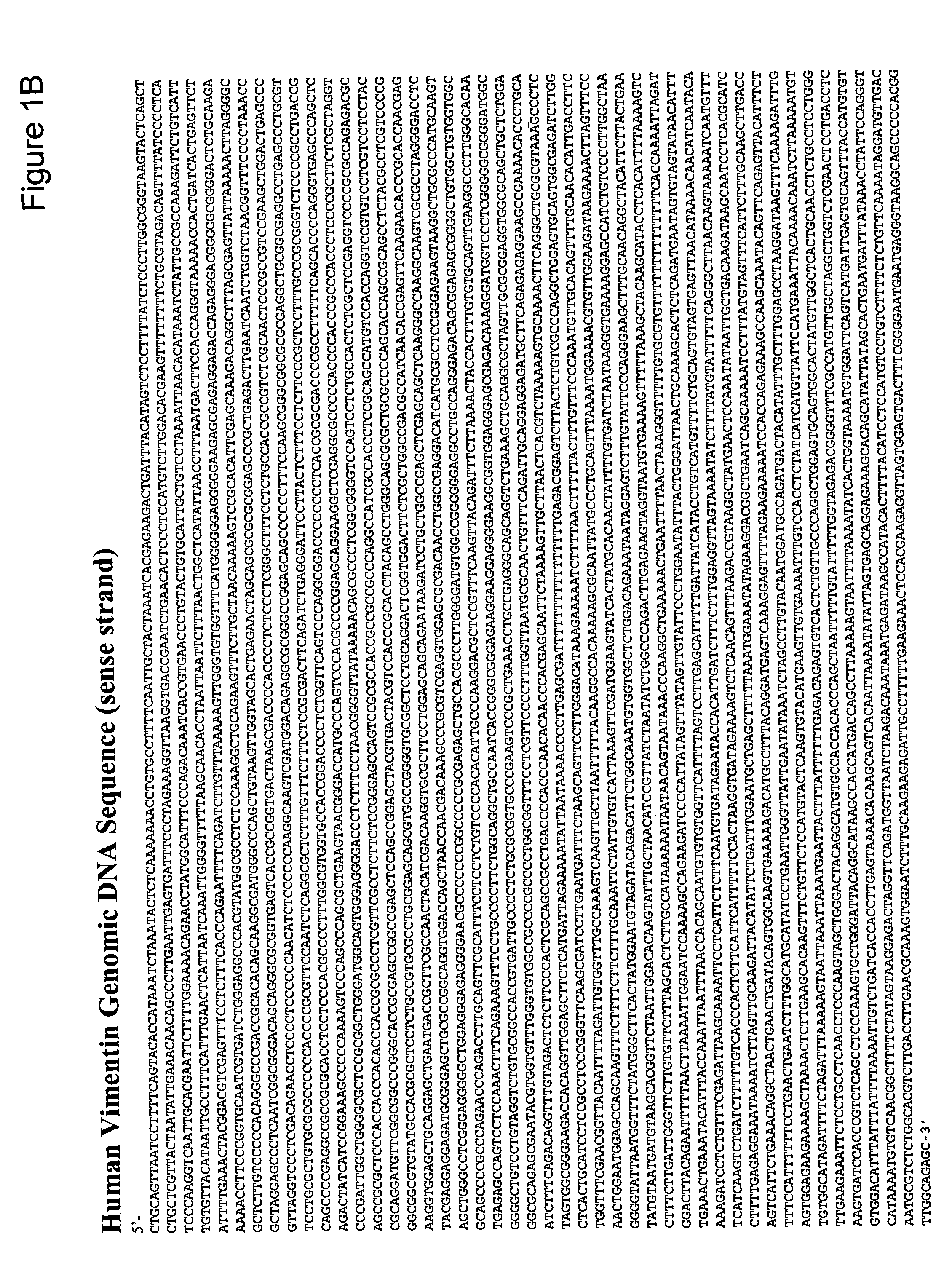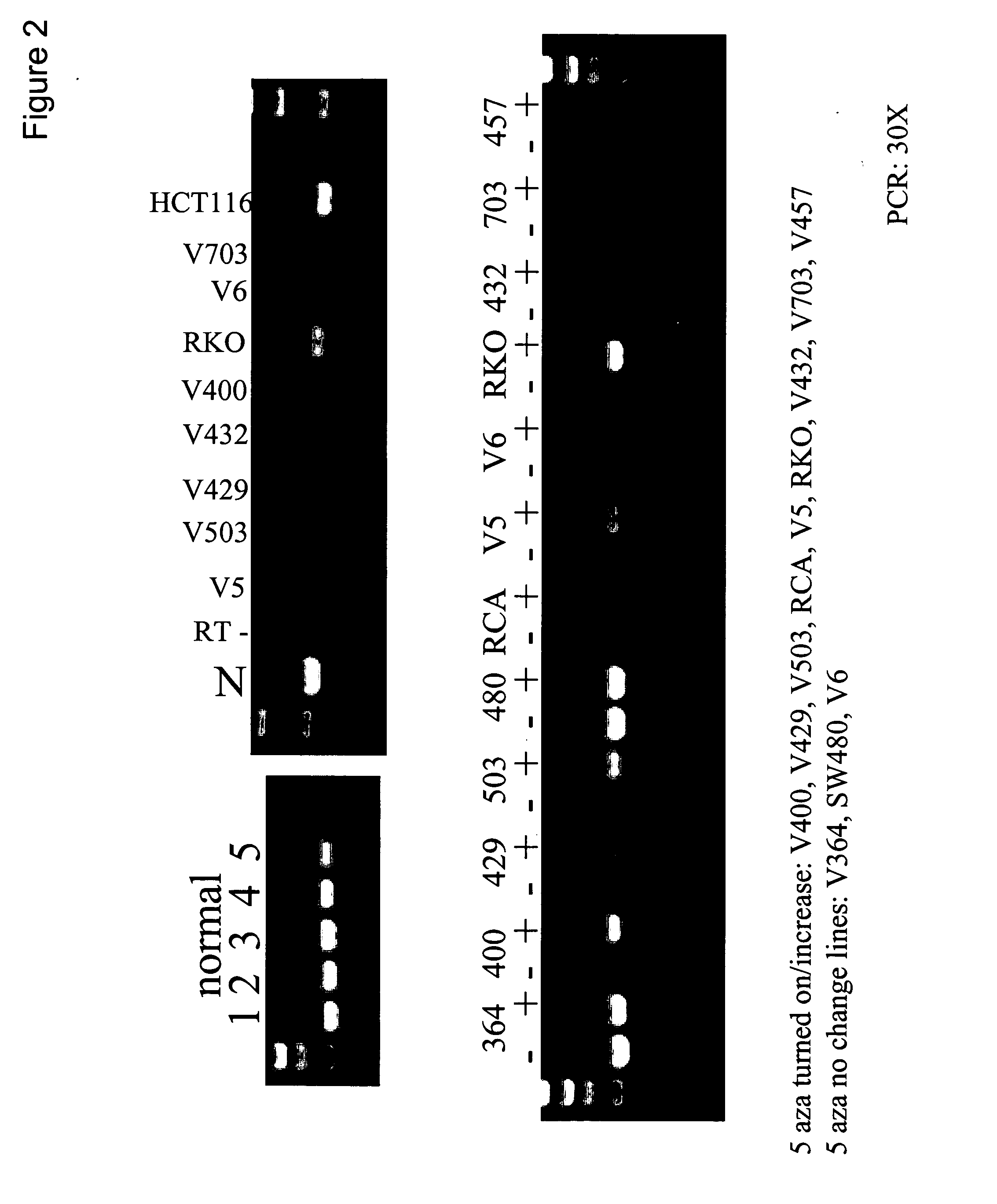Methods and compositions for detecting colon cancers
a technology of colon cancer and composition, applied in the field of methods and compositions for detecting colon cancer, can solve the problems of inaccurate, unpleasant, and unsatisfactory methods, and achieve the effects of improving the accuracy of rectum examination
- Summary
- Abstract
- Description
- Claims
- Application Information
AI Technical Summary
Benefits of technology
Problems solved by technology
Method used
Image
Examples
example 1
1. Cell Culture and 5-Azacvtidine Treatment
[0185] The cultures were grown and treated as described previously (Veigl, et al., 1998, Proc. Natl. Acad. Sci. USA, 95:8698-8702). The optimal tolerated doses were determined for each treated line, and two doses were used for some lines, ranging from 1 μg / ml to 3 μg / ml.
2. Methylation-Sensitive Restriction Endonuclease Assays (e.g., HpaII Assays)
[0186] We examined the genomic sequence upstream of and within the vimentin gene (herein referred to as 5′- vimentin genomic sequence) which contained a CpG dense region that could potentially be methylated (FIGS. 1 and 6). To test for methylation of this CpG-rich region, we first utilized the HpaII assays. Sample DNAs were digested with the methylation-sensitive enzyme HpaII, and then amplified by a pair of PCR primers. When the DNA is methylated, it is resistant to the Hpall digestion and accordingly a PCR product is produced. On the other hand, when the DNA is unmethylated, it is susceptible...
example 2
[0205] The following experiments and data further specify specific regions and their sequences of vimentin whose aberrant methylation is a high frequency marker of colon cancer. These data additionally specify assays for these sequences.
[0206]FIGS. 32-34 are a summary that show a diagrammatic display of the vimentin 5′ genomic region from basepairs 56700 to 58800 of NCBI human genomic sequence entry AL133415. Boxes show the vimentin regions A, B, C and D. Previous HpaII digestion assays had demonstrated that regions A and D were not methylated in cancer. Accordingly, regions through C were exhaustively interrogated with methylation specific PCR assays. Balloons on the figure indicate CpG dinucleotides that are targets for potential methylation. Dark balloons designate CpGs that are population polymorphisms. FIG. 32 designates regions A through B, and FIGS. 33-34 designates regions C through D. Bars under the figure indicate regions interrogated by different methylation specific PCR...
PUM
| Property | Measurement | Unit |
|---|---|---|
| length | aaaaa | aaaaa |
| temperature | aaaaa | aaaaa |
| temperature | aaaaa | aaaaa |
Abstract
Description
Claims
Application Information
 Login to View More
Login to View More - R&D
- Intellectual Property
- Life Sciences
- Materials
- Tech Scout
- Unparalleled Data Quality
- Higher Quality Content
- 60% Fewer Hallucinations
Browse by: Latest US Patents, China's latest patents, Technical Efficacy Thesaurus, Application Domain, Technology Topic, Popular Technical Reports.
© 2025 PatSnap. All rights reserved.Legal|Privacy policy|Modern Slavery Act Transparency Statement|Sitemap|About US| Contact US: help@patsnap.com



